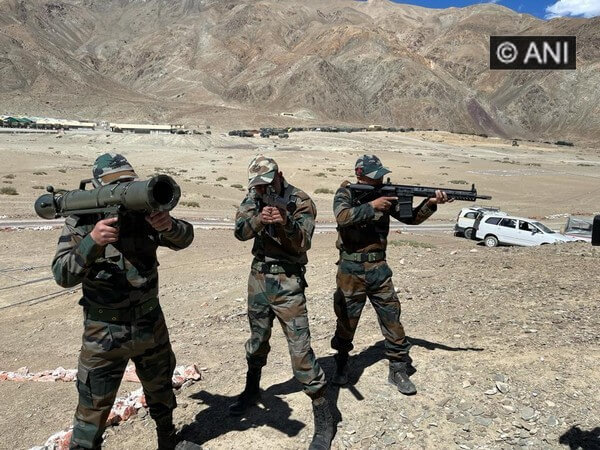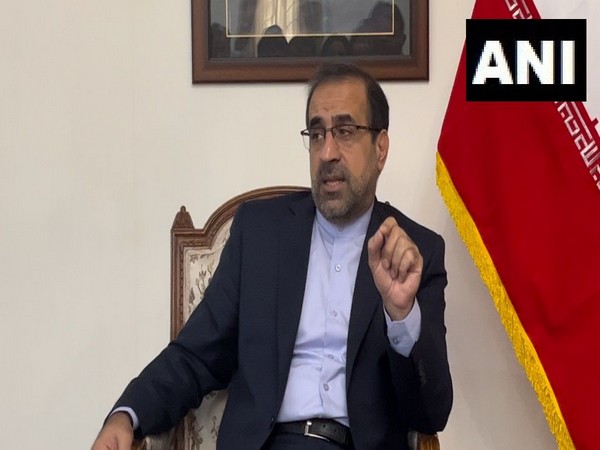
LAC : China’s Strategic Misadventure

China reinforcing her strategic misadventure along the India – China Line of Actual Control (LAC) passed a new ‘Land Border Law’ on 23 October 2021, effective 01 January 2022. The timing of the passing of the Law has a direct correlation with ongoing standoff between the world’s two largest armies along the High Himalayas. The enactment of the law followed the failed thirteenth round of Corps Commander level talks at Moldo on 10 October 2021. The condescending statement by the PLA spokesperson post the talks are indicative of a hardened position by China as it seeks a ‘face saving’ exit from a military coercion against India gone wrong, as India demonstrated a strategic resolve to ensure her territorial integrity. The strategic signals by China of her continued military coercion are indicative of a long haul along the LAC. The Land Border Law aims to improve coordination between the national, regional and local level authorities to maintain China’s national security and territorial integrity.
China shares a 22,117 kilometers-long land border with 14 countries. Pursuing Mao’s philosophy of having inclusive land borders, China resolved the boundary disputes with all of them, except for India and Bhutan. The borders of China-India-Bhutan are interlinked as both India and Bhutan share the same definition of their respective borders (Trijunction).
Xi Jinping assumed the supreme leadership in March 2013. As Xi Jinping is known to follow Mao and his dictums, he gave the first indication of a shift in China’s position to resolve the legacy boundary question with India immediately thereafter. In a meeting with the then Prime Minister Manmohan Singh on the sidelines of the BRICS summit at Dublin on 28 March 2013, while discussing the Boundary Question he said, “China and India should improve relations and make good use of the mechanism of Special Representatives to strive for a fair, reasonable solution and framework acceptable to both sides AS EARLY AS POSSIBLE”.
This was a major shift in position as hither-to-fore the position of both sides was that the Boundary Question is a complex historical legacy which will take time to resolve, and should not affect the India-China relations. This was followed by the 19.5 kilometers deep intrusion by the PLA in the Depsang Plains on 14 Apr 2013, lasting 22 days. The Chumar intrusion in Sep 2014 coincided with President Xi’s high profile visit to India.
The increase in frequency, scope and intensity of transgressions along LAC continued unabated with the PLA intruding in the Doklam plateau of Western Bhutan to construct a road up to the sensitive Jampheri Ridge which provides an avenue to the narrow Siliguri corridor which is the only access to India’s eight and a half North East states. The 73-day standoff was resolved only after the informal summit between President Xi and PM Modi in Wuhan. The sequence of events is important to contextualize the May 2020 forward deployment by the PLA, violating the four and half year old decade ‘Peace and Tranquility’ along the LAC.
On 14 October 21 in a first, Bhutan and China announced the signing of a memorandum of understanding of a ‘Three Step Roadmap’ to expedite the boundary talks to demarcate the 470 kilometers long boundary. This agreement comes not only after the Doklam intrusions but also China’s new claims in Eastern Bhutan’s Sakteng Wildlife Sanctuary in proximity of the historically and religiously important Tawang monastery and town.
The strategic aim and intent of the Chinese dispensation under Xi Jinping is clear, resolve the ‘Boundary Question’. However, China’s strategy to achieve the aim is faulty, as ‘Military Coercion’ which is a strategic miscalculation and has backfired on China. If India does not understand China, China too does not understand a responsible, risen, resurgent India. China’s aggressive behaviour to pressurise India has been counterproductive.
Gautam Bambawale, former Indian Ambassador to Beijing and Thimpu, told The Print that “By its military actions commencing May 2020, China has shown that it wants to settle the boundary with India, not through negotiations but by use of force. India has given them a befitting response. The India-China relationship has deteriorated over the past months since May 2020. If this new law was a message to India, I am afraid it has fallen flat on its face as it does not change the situation on the ground at all,”[1] Indian militaries’ resolute response, a strategic resolve to safeguard the territorial integrity, an equitable and proportional deployment and a vigorous push to infrastructure development are some of the actions which have surprised China. China miscalculated India’s reaction and resolve to safeguard her territories and interests, though she continues with her aggressive behavior seeking a face saving exit.
Much like the Coast Guard and the Maritime Traffic Safety Law passed earlier this year, the land Border Law too is passed amid heightened tensions along the LAC. The law, comprising seven chapters with 63 clauses, underlines that “The PRC’s sovereignty and territorial integrity are sacred and inviolable and the state shall take measures to safeguard them.” It creates a legal framework for the Chinese People’s Liberation Army (PLA), the People’s Armed Police (PAP) and the border defence units to counter any perceived invasion, encroachment, infiltration or provocation across its land borders. It can thus be interpreted as an attempt to legally formalise China’s recent actions and the aggressive behaviour along the LAC.
Kewalramani, who is also author of Smokeless War: China’s Quest for Geopolitical Dominance, said Article 1 of the policy that talks about “delineation and demarcation of land borders” and Article 4, which stipulates that “sovereignty and territorial integrity” are “sacred and inviolable”, are indicative of a “tougher stance” that China will take on boundary negotiations when it comes to India.[2]
The law outlines four conditions that can prompt border shutdown, port closure, or other “emergency measures”[3]:
- When a war or armed conflict breaks out on the periphery and threatens China’s border security and stability.
- When a major incident poses a grave threat to national security or the life and property of residents in the border area.
- When the border area is threatened as a result of a natural disaster, public health incident, or nuclear, biological, or chemical pollution.
- Other situations that seriously impact the land border and security and stability in border areas.
China propagates and practices the “Three Warfare Strategy” of public opinion warfare, psychological warfare, and legal warfare. According to some experts, the land law will plug the ‘Legal Gap’ at the national level while dealing with border issues. As India – China and the Bhutan border is the only unresolved border for China, the Law apparently aims at pressurising India to resolve the ongoing LAC standoff in China’s favour.
The new law is another attempt by China to justify an unacceptable aggression and prepare the people for a conflict, especially in view of the fact that Tibetans are likely to support India and India’s cause rather than the suppression of Tibet. China also is establishing over 600 villages along the 3488 kilometers India-China border, which implies a village mostly inhabited by Hans at an average of 5 kilometers. An effective method to stake claims along the unsettled borders wherein China occupies a little over 38,500 square kilometers of Indian territory and claims a total of nearly 110,000 square kilometers including 70,000 square kilometers of Arunachal Pradesh.
Indian armed forces and India have stood up to the China challenge, however, India will need to continue to build capabilities to meet and mitigate the China challenge. While the focus in the immediate to near term will continue along the LAC, it is the domination of the Indian ocean which is a strategic vulnerability for China. India should aim to optimally exploit the dominant location of the Andaman and Nicobar Islands by developing these as a primary Naval facility. India should pursue a ‘Three D’ strategy – ‘Defend the LAC’, ‘Dominate the Indian Ocean’ and ‘Deter China’s aggressive behaviour’ by ‘Bind to Balance’ with nations having convergence and congruence of interests.
Both Beijing and New Delhi continue to seek a resolution through negotiations at the political, diplomatic and more importantly the military level. The hardening of positions by China and India’s resolute stand to ensure a ‘Status Quo Ante’ are indicative of a long haul. In negotiations patience pays and hence time cannot be of essence. China respects strength and India should continue to negotiate from a position of relative strength, building requisite capabilities, enhancing capacities and maintaining a vigil all along the 3488 kilometers India-China border.
***************
References-
[1] Nayanima Basu : ‘Hot air’ or ‘tougher stance’? China’s new Land Border Law & what it means for India.https://theprint.in/theprint-essential/hot-air-or-tougher-stance-chinas-new-land-border-law-what-it-means-for-india/756519/.
[2] Ibid
[3] Shuxian Luo :China’s Land Border Law: A Preliminary Assessment 04 November 2021.https://www.brookings.edu/blog/order-from-chaos/2021/11/04/chinas-land-border-law-a-preliminary-assessment/
*************
Disclaimer
The opinions expressed in this article are the author’s own and do not reflect the views of Chanakya Forum. All information provided in this article including timeliness, completeness, accuracy, suitability or validity of information referenced therein, is the sole responsibility of the author. www.chanakyaforum.com does not assume any responsibility for the same.
Chanakya Forum is now on . Click here to join our channel (@ChanakyaForum) and stay updated with the latest headlines and articles.
Important
We work round the clock to bring you the finest articles and updates from around the world. There is a team that works tirelessly to ensure that you have a seamless reading experience. But all this costs money. Please support us so that we keep doing what we do best. Happy Reading
Support Us




















POST COMMENTS (2)
Amit Rana
Mukesh.Naik